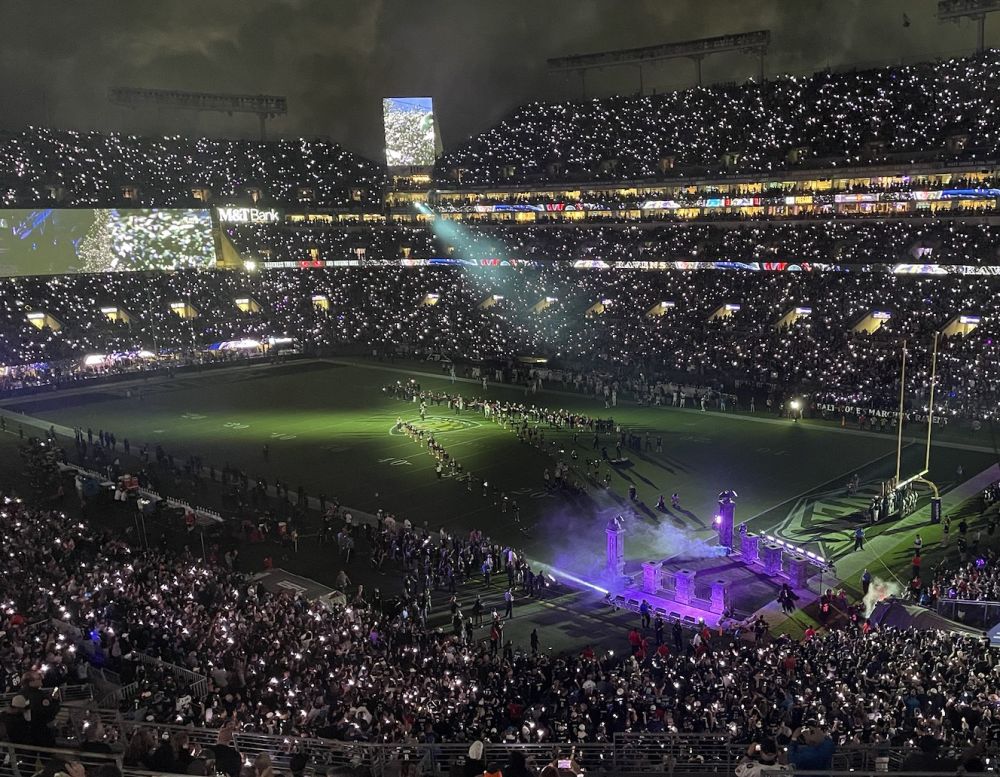It was so much easier when I was growing up, this sports media thing. First, you learned how to write and then you went to some journalism or “communications” college or university, you did an internship and then sent resumes out and you got your dream job and lived happily ever after.
And maybe you got a gold watch if you hung around at the newspaper or TV station for 25 years or more?
Here at WNST.net this summer, we’re extending an open offer to any Baltimore sports fan who wants to be the next Baltimore Sports Media Superstar via our competition. All of the info is here…
The harsh reality of media and new media in 2012 is that it’s an all-encompassing commitment of time, experience and continuing education that makes a local personality or entity relevant as breaking news, information, analysis and the games themselves fly by in real time with your mobile device with you at all times.
And that’s just the content side.
Here’s a speech I gave to a Loyola Sports Marketing class in May 2012. This is Part 1 in a series about my current thoughts on the state of Baltimore sports media and the industry as a whole:
If you can’t sell your own personal brand – by bringing in audience, engaging them, adding value to their life experience and adding expertise or analysis that people care about – you will NOT be successful in the new media world.
If no cares to be your audience – or in this era that would be “opt in” or “follow” or “subscribe” — then no one will be available to stimulate the commerce necessary that ultimately will pay your salary via local sponsorship dollars..
In the old days it was easy – there were three TV channels, a few radio stations and a newspaper or two. Whoever the local program director or editor hired was all that the public got and all that you’d ever get from the “inside” of a sports team. The competition for those scarce jobs and the outstanding pay via expensive local television news ads fueled by automotive dealers and local advertisers was all coveted. And the public in Baltimore essentially had three choices for the 6 p.m. and 11 p.m. news – WBAL, WMAR and WJZ. There were two newspapers – The Sun and The News American. And sports radio didn’t exist except for Charley Eckman screaming bloody murder about some local issue on the Johnny Walker show on WFBR.
That was the entire world of Baltimore sports media in the 1970’s and 1980’s.
And the only ones who really did it the “new world” way were Coach Eckman and Tom Davis, who bought and sold their own “in-show” advertising and made far more money than most radio “talking heads” did and certainly more than the folks at The Sun or The News American.
All of the TV and newspaper people were part of a larger ensemble and staff. The radio sports talk guys needed to fight for audience and those radio stations needed hosts who garnered real traffic and real new business for local sponsors and advertisers.
This is the world I lived in on local AM radio from 1992 until 2006, when tens of thousands of you crashed my webpage and my email with traffic from all over the world after the initial “Free The Birds” walkout and showed me a new world of WNST.net on the internet.
In the new media world, if you can’t sell your own brand as a sports media expert then how can a local sponsor or business owner trust that you can help them sell pizza or cars or beer?
The reality is that I’m in college every day at WNST.net. The college of life, emerging media and business in 2012 and how it relates to the changing ways of sports fans’ consumption of information via mobile devices in real time.
It’s taken two decades but I’ve finally figured out why I went to college back in the 1980’s. All of those beers at Jay’s off campus at the University of Baltimore and all of those evening classes about Marshall McLuhan — it’s all finally paid off. All those classes with Julie Simon and discovering the roots of communication and theory of how the “medium is the message” and emerging “global village” has changed the world in the last decade since the internet has extended our FCC towers at what was formerly a “little AM radio station” at WNST-AM 1570 and brought video and words and statistics and instant feedback into the realm of the palm of our hands via mobile via WNST.net.
I’ve finally figured out the value of my University of Baltimore education and Corporation Communications degree – it just took me 20 years!
While I’m not going to be donating to UB anytime soon – or anytime that the name of Peter G. Angelos


























